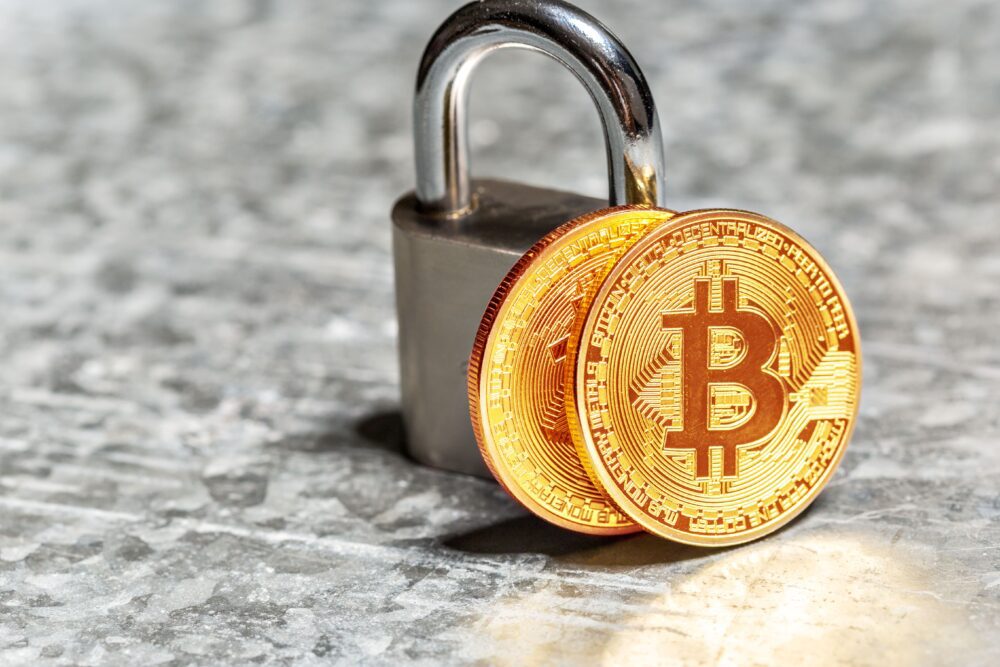Bitcoin investors who elect to self-custody their crypto assets are now facing waves of fresh risks amid rising global instability. From geopolitical strife to extreme weather, the storing of digital wealth independently—which, for a long time, was seen as the pristine form of financial independence—is now proned to severe questioning. Self-custody establishes independence from centralized exchanges, but one is left fully exposed in the absence of any safeguards in cases of disaster, loss, or theft. For hardcore Bitcoin bulls determined to hold their keys, the time to reassess their security practices and prepare for worldly threats has never been more urgent.
Key Points For Cyber Report For Bitcoin Bulls
- Some cryptocurrency investors tend to self-custody their digital assets, such as Bitcoin, by storing their private keys in hardware wallets in cold storage. This allows greater control and security than leaving custody in the hands of third-party solutions like hot wallets by crypto brokerage firms. Therefore, keeping Bitcoin in hardware wallets is self-ostensible.
- The recent geopolitical interruptions in places like Israel, in addition to extreme weather activity in California, have stressed that keeping cryptocurrencies on the personal “bank-vault” arrangements comes with its own peculiar and dynamic risk profile.

And that’s probably the biggest decision in the life of an investor whose interest lies in digital assets. whether or not to buy cryptocurrency as long-term investments, the most crucial decision could well boil down to storing cryptocurrencies such as bitcoin.
After California witnessed wildfires earlier this year, posts inundated the social media, crying over the losses in bitcoin. Some users posted pics of these metal plates that were presumably used to store seed phrases that got burnt and disfigured beyond recognition. Others waxed eloquent on the agony of retrieving crypto keys stored in a safety deposit box at a bank that was also impacted by the fires. While it would be impossible to verify individual posts about fires consuming hard drives, laptops, and other storage devices with so-called hard and cold storage crypto wallets and seed phrases, there are unique and peculiar security issues about bitcoin self-custody itself, and these issues add up to a whole lot of security concerns. And they are increasing.
Crypto holders usually use a so-called “wallet” to manage their assets, which differ in several key properties-most importantly, whether the wallet is connected to the internet and to what degree the investor has control over executing trades and transfers. Another major consideration is custody: while some investors place their trust in a third-party service to hold their crypto, others opt for full self-custody, controlling their assets, and transactions in every regard.
A standard, third-party hot wallet – such as those offered by Coinbase or Blockchain.com – is connected to the internet at all times, thus making it instantaneously accessible yet also exposing it to cyberattack threats. Cold wallets, or cold storage solutions, on the other hand, have private keys kept offline and often use hardware devices (like USB sticks) or simply keep paper notes of a seed phrase (a recovery code of 12 to 24 words). These cold methods can connect with another device when access to the crypto is sought, thus providing a more secure but less convenient option.
Adopting two-factor authentication and creating strong and unique passwords are some of the measures by which threats to cyberspace can be mitigated when one employs some third party custodial platforms. Even for major institutions, a lot of them still rely on this platform. Take for example the U.S. Marshals Service, which happens to be a department of Justice and is there to manage all seized federal assets. This department manages its confiscated digital assets through Coinbase Prime.
The fundamental reason why crypto enthusiasts opt to hold such assets as Bitcoin in self-custody is the ingrained distrust against the institutions – incidentally, one of the core reasons why people are into crypto. However, by using custodial wallets owned by brokers for the mere sake of convenience, one brings along risks such as hacks, closures, and even frauds as the unfortunate case was with FTX. Recent events worldwide such as the terrible wildfires, as well as the ongoing wars in the Middle East and that between Russia and Ukraine, has added fuel to the discussion on crypto custody, forcing many international holders of these assets to revisit their self-custody strategies.
By having real-world threats such as activity and disasters, he stressed that the time has come to actually rethink the Bitcoin security paradigm and the common oversights by most users. “Most people secure their Bitcoin with just one private key,” he elaborated. “If that key happens to be stored on one device or written down as a seed phrase, it creates a single point of failure. Lose that key, and your Bitcoin is gone.”
Neuman noted how ironically keeping seed phrases on paper is the most common way of storing, while, actually, it gives the least fire protection. While placing it in fireproof bags or safes could be an additional layer, that rarely suffices. Not even changing to so-called “indestructible” metal storage plates guarantees safety-they’re easily rendered inoperative or unrecoverable under extreme conditions or debris after a disaster.
According to Neuman, “So, in terms of logic given the location of the fires in California and the information being put out on X, it’s highly possible that bitcoin was lost. Some of these are rather convincing.”
Multi-signature architectures meant to mitigate the risk of a single point of failure are offered by some self-custody organizations like Casa. So-called multi-key crypto “vaults” can involve a combination of phone keys, multiple hardwares, and a backup recovery key kept by a third-party custodian like Casa for added security and accessibility (one cool thing!).
Multi-signature custody model allows the owner to keep the control by holding the most keys while a trusted partner holds a few. As per John Haar, the managing director in Swan Bitcoin, it reduces the risk a lot-the owner would need to put in the disadvantage: losing all physical devices and all copies of the seed phrases simultaneously. This was a pretty good thing because in this case, at least one device or seed phrase was remaining, the Bitcoins can be recovered. It significantly lowers the chances of total loss during events like natural disasters, Haar says.
“You could use keys in different areas-or countries-and only three out of the five are necessary for authorizing a Bitcoin transaction,” Neuman stated, quoting Casa’s five-key multi-signature technique.
Jordan Baltazor—the chief administrative officer at Fortress Trust, a regulated crypto custodian—believes that the same best practices applied in everyday life should also apply when managing cryptocurrency. Diversifying storage options and carefully weighing the different risks involved for various storage options is paramount. Just as personal backups of all critical data stored in the cloud to avoid loss or corruption, similar implementations are required to protect digital assets to avoid any unforeseen chance of being lost or inaccessible.
Coinbase and Block, the firm founded by Jack Dorsey, for instance, manufacture products that make it easy but strongly secure for a crypto user. Think of the example of Coinbase Vault, in that it adds extra steps before one can access any crypto for trading. Another example would be Coinbase Wallet or Bitkey from Block; they behave mostly like traditional mobile wallets for easy Bitcoin transfer, but actually also have the option to pair with hardware wallets – that is, carrying with them the extra protection usually typical of cold storage solutions.
With multiple authorizations being required for transactions, the Bitkey hardware wallet enhances security quite similar to a multi-signature wallet. Recovery tools are built into the hardware wallet, which mitigates one of the greatest risks of self-custody, that is, loss of codes and seed phrases required to recover access to a cold wallet.
Thus far, these solutions have been none other than Jack Dorsey’s, and in so doing, they aim to bridge the convenience-security gap. Not possibly a nettle for a sufficiently wide-reaching adoption of crypto strays. Outside external threats such as wildfires, natural disasters, or widespread global conflicts, self-custody also faces a uniquely personal vulnerability: the unwanted demise of the asset holder. Among the toughest mysteries in crypto-therapy, inheritance often makes the custody chain quite a complicated puzzle and sometimes impossible to solve.
Coinbase demands probate court documentation as well as a clear will specification to release money from custody, offering a stately but slow inheritance process. On the. Digital wallets usually leave very little support for asset transfer after death. This means that the loss of one’s private key could potentially spell out the condition under which digital wealth becomes permanently stranded. Because of this gap, Bitkey launched its inheritance solution last February, with one executive calling it “kind of a multibillion-dollar problem waiting to happen.”
With Bitcoin becoming a really wild ride, some holders will have to think about protection in different ways,” Neuman admitted. “Usually after some sort of mass upset, like the California wildfires or the implosion of major exchanges like FTX, there is an uptick in crypto holders moving their assets to secure storage options. It’s in human nature to react after the fact when something bad happens.’ But we stress being proactive—because if you wait until it happens to you, it might already be too late.”







